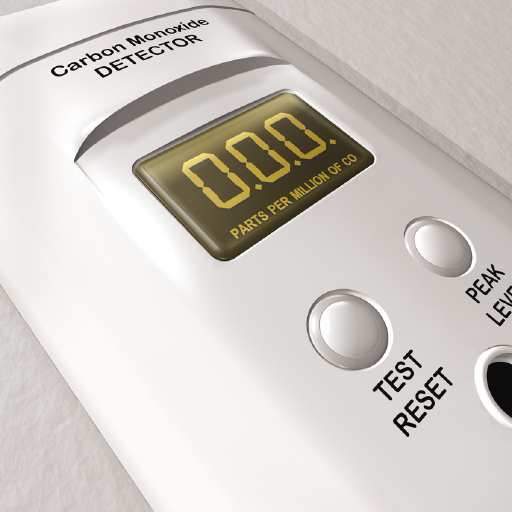Carbon monoxide (CO) is a colorless, odorless and deadly gas produced by the incomplete burning of fossil fuels used in appliances such as furnaces and portable gas generators.
As the cold weather approaches, here are some tips to prevent carbon monoxide build-up in your home:
 Have a carbon monoxide detector in your home. Since you can’t see or smell carbon monoxide, you will need a detector to alert you of any build-up. Carbon monoxide detectors should be placed on each floor of you home near sleeping areas. If your detector is hard-wired or a plug-in model, be sure that it has a battery back-up.
Have a carbon monoxide detector in your home. Since you can’t see or smell carbon monoxide, you will need a detector to alert you of any build-up. Carbon monoxide detectors should be placed on each floor of you home near sleeping areas. If your detector is hard-wired or a plug-in model, be sure that it has a battery back-up.
- Replace your carbon monoxide detector because the sensors degrade. The lifespan of your carbon monoxide detector can range from five to ten years. Be sure to check the packaging on your unit to find out how long your detector will last. It is important to look at the date stamped on the unit and review the owner’s manual to determine the lifespan of your unit.
- Service your heating system annually. Make sure your furnace, chimney flues, and gas appliances are in proper working order before the cold weather hits.
- Place portable generators outside and as far as possible away from your home. Gasoline-powered generators release carbon monoxide, so make sure they are far from your home. Safety tips on using portable generators.
- Make sure inlets and outlets for your furnace are free of snow. Some furnaces have exhaust vents that could become blocked by snow, causing ventilation problems. Know what type of exhaust system your furnace has and where the exhaust inlets and outlets are located for your home.
- After a snow storm, make sure your car's exhaust pipe is clear. A clogged exhaust pipe could lead to carbon monoxide buildup in your vehicle.
- Do not use portable generators, snow throwers, or other gasoline-generated equipment inside your home, garage, shed or other partially enclosed areas, even if the doors or windows are open.
- Never use charcoal or gas grills inside your home or garage. Make sure to use grills outdoors only.
- Know the symptoms of carbon monoxide poisoning. Symptoms for carbon monoxide poisoning often are the same as for the cold or flu. If you and your family members are experiencing cold or flu symptoms when you are at home, but the symptoms go away when you leave, this may be a sign of carbon monoxide poisoning. The symptoms for carbon monoxide poisoning are:
- Headache
- Fatigue
- Dizziness
- Nausea
- If you suspect carbon monoxide poisoning, leave your home IMMEDIATELY. Call 911 from a cell phone or a neighbor's house after you have left the home. You should also call the Connecticut Poison Control Center at 1-800-222-1222.
Listen here:
Signs and Symptoms of Carbon Monoxide Poisoning and What to do if You Suspect Carbon Monoxide Poisoning (30 seconds) (script)

